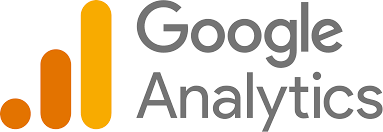Data analysis has become an indispensable tool in various fields, from business to science and beyond. Yet, for beginners, stepping into the realm of data analysis trade can feel daunting and overwhelming. The sheer volume of data, the complexity of tools and techniques, and the jargon-filled landscape can seem like insurmountable barriers. However, by breaking down these barriers and embarking on a journey of exploration, one can demystify the world of data analysis and unlock its vast potential. This article serves as a guide for beginners, offering insights and practical advice to navigate this exciting journey.
Data Analysis Trade Road Map
Table of Contents
Understanding the Data Analysis Trade
At its core, data analysis is about making sense of information. Data come in various forms, including numbers, text, images, and more. Before diving into analysis, it’s essential to understand the types of data and how they are collected and organized. Data can be structured, such as tables in a spreadsheet, or unstructured, like text documents or social media posts. Understanding the nature of your data is the first step towards effective analysis.
Tools of the Data Analysis Trade
One of the initial challenges for beginners is choosing the right tools for data analysis trade. There is a wide array of software and programming languages available, each with its strengths and learning curves. Popular tools include Microsoft Excel for basic analysis, R and Python for more advanced statistical modeling, and Tableau for data visualization. Each tool has its advantages and suitability for different tasks. It’s essential to explore and experiment with various tools to find the ones that best fit your needs and preferences.
Data Cleaning and Preparation
Before diving into analysis, data must be cleaned and prepared. Real-world data is often messy and incomplete, containing errors, duplicates, and missing values. Data cleaning involves identifying and correcting these issues to ensure the accuracy and reliability of your analysis. This process can be time-consuming but is essential for obtaining meaningful insights. Once the data is clean, it needs to be organized and structured in a way that facilitates analysis. This may involve reshaping the data, creating new variables, or aggregating information. Proper data preparation sets the stage for effective analysis.
Exploratory Data Analysis
With clean and prepared data in hand, it’s time to explore and understand its underlying patterns and relationships. Exploratory data analysis (EDA) involves visualizing and summarizing data to uncover insights and hypotheses. This often includes techniques such as histograms, scatter plots, and summary statistics. EDA is an iterative process, where one explores different aspects of the data and refines their understanding as they go. It’s a crucial step in the analysis process, laying the groundwork for more advanced techniques.
Statistical Analysis
Once the data has been explored, one can move on to more formal statistical analysis. This involves applying statistical techniques to test hypotheses, make predictions, and draw conclusions from the data. Common statistical methods include hypothesis testing, regression analysis, and machine learning algorithms. Statistical analysis allows one to quantify relationships between variables, identify significant patterns, and make informed decisions based on data-driven insights. However, it’s essential to interpret the results of statistical analysis with caution and consider the limitations and assumptions underlying the techniques used.
Data Visualization
Data visualization is a powerful tool for communicating insights and findings from analysis. Visualizations such as charts, graphs, and dashboards can help make complex data more accessible and understandable to a broader audience. Effective data visualization involves choosing the right type of visualization for your data and audience, designing clear and intuitive graphics, and telling a compelling story with your visualizations. With the abundance of visualization tools and libraries available, beginners can create professional-looking visualizations with minimal effort.
Ethical Considerations
As data analysis becomes increasingly pervasive, it’s essential to consider the ethical implications of our work. Data privacy, bias, and fairness are just a few of the ethical issues that arise in the context of data analysis. It’s crucial for analysts to be aware of these issues and take steps to mitigate them in their work. This may involve anonymizing sensitive data, ensuring representativeness in samples, or being transparent about the limitations of your analysis. By upholding ethical standards, analysts can build trust and credibility in their work and contribute to positive social impact.
Conclusion
Embarking on a journey into the data analysis trade can be both challenging and rewarding. By understanding the fundamentals of data, choosing the right tools, and following a systematic approach to analysis, beginners can demystify the process and unlock its potential. From data cleaning and exploration to statistical analysis and visualization, each step in the journey brings new insights and opportunities for learning. By embracing curiosity, perseverance, and ethical principles, anyone can become proficient in the art and science of data analysis. So, take the first step on your journey today and discover the transformative power of data.


